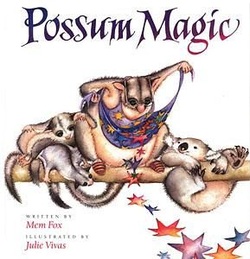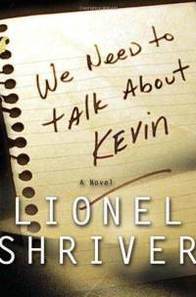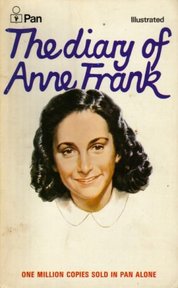Here are ten reasons why you shouldn’t despair if you have an unpublished manuscript. These famous rejections are sure to cheer you up:
1. Can you im agine a world without Possum Magic? Apparently many publishers could. Mem Fox’s classic was rejected nine times over five years. Little Hush would have remained invisible were it not for Omnibus Books in Adelaide. Originally called Hugh, the Invisible Mouse, Omnibus suggested changing the mice to possums, and the rest, as they say, is history. Since 1983 Possum Magic has sold 3.5 million copies, making it the bestselling Aussie kids’ book of all time. And speaking of magic leads me to…
agine a world without Possum Magic? Apparently many publishers could. Mem Fox’s classic was rejected nine times over five years. Little Hush would have remained invisible were it not for Omnibus Books in Adelaide. Originally called Hugh, the Invisible Mouse, Omnibus suggested changing the mice to possums, and the rest, as they say, is history. Since 1983 Possum Magic has sold 3.5 million copies, making it the bestselling Aussie kids’ book of all time. And speaking of magic leads me to…
2. Harry Potter, of course. It was turned down by twelve publishers including Penguin and HarperCollins. In the end it was a child who made it all happen. Bloomsbury only took it on because the CEO’s eight-year-old daughter begged him to print it. Thanks to that little girl JK Rowling is now the world’s richest author. In one year alone (2007–2008) it was estimated that she made $300 million, and it’s rumoured that she’s now a cool $50 mill richer than the Queen. Enough said.
 3. Even authors with a publishing track record sometimes struggle to get their newest work into print. Lionel Shriver’s controversial seventh book, We Need to Talk About Kevin, was rejected 30 times before finding a publisher. It went on to win the prestigious Orange Prize for Fiction. If you haven’t read this book yet go out and buy it immediately. Yes, immediately. It is compelling, disturbing, haunting and beautifully written. A stunning book that I can’t get out of my head.
3. Even authors with a publishing track record sometimes struggle to get their newest work into print. Lionel Shriver’s controversial seventh book, We Need to Talk About Kevin, was rejected 30 times before finding a publisher. It went on to win the prestigious Orange Prize for Fiction. If you haven’t read this book yet go out and buy it immediately. Yes, immediately. It is compelling, disturbing, haunting and beautifully written. A stunning book that I can’t get out of my head.
4. This one has got to break some kind of world record for the number of rejections it received. Chicken Soup for the Soul, by Jack Canfield and Mark Victor Hansen, was turned down 140 times. Publishers claimed it was ‘too positive’ and that ‘anthologies don’t sell’. I bet Canfield and Hansen have been laughing their way to the bank since Health Communications took a chance on it. The 200-title multimillion dollar series has since sold more than 112 million copies in over 40 languages. Touché.
5. Ted Geisel, aka Dr Seuss, was rejected by 27 publishers before Random House picked up his first book. Just imagine if he’d chucked it in after the twenty-seventh rejection! We’d be without Which-What-Whos and Fox in Socks and Green Eggs and Ham — my children would be none too pleased about that. And I’m guessing there are a few others who might agree. Seuss was advised by one rejecting publisher that his work was ‘too different from other juveniles on the market to warrant its selling’. In contrast, former president of Random House, Bennett Cerf once said, ‘I’ve published any number of great writers, from William Faulkner to John O’Hara, but there’s only one genius on my authors’ list. His name is Ted Geisel.’ At the time of his death in 1991, Dr Seuss’ 44 books had sold more than 200 million copies.
6. Stephen King may never have been published if it wasn’t for his wife. King threw his novel Carrie in the bin, but his wife retrieved it and encouraged him to keep going. He did so, but it wasn’t smooth sailing from there. He received 30 rejections for Carrie, with one publisher commenting, ‘We are not interested in science fiction which deals with negative utopias. They do not sell.’ Eventually it was picked up by Doubleday (who had previously rejected three earlier novels of King’s) for a modest $2500 advance. The book that would ‘not sell’ found its way into the hands of over one million readers in its first year. King’s books have now sold over 350 million copies making him the third richest author in the world.
 7. Lord of the Flies is a standard on school curricular across the globe but William Golding’s classic novel was initially rejected by 20 publishers. One nastily pronounced it to be ‘an absurd and uninteresting fantasy which was rubbish and dull’. I bet they wish they could take those words back now. Golding went on to win a Nobel Prize for Literature, and, in 2005, TIME magazine ranked it as one of the top 100 English-language novels ever written.
7. Lord of the Flies is a standard on school curricular across the globe but William Golding’s classic novel was initially rejected by 20 publishers. One nastily pronounced it to be ‘an absurd and uninteresting fantasy which was rubbish and dull’. I bet they wish they could take those words back now. Golding went on to win a Nobel Prize for Literature, and, in 2005, TIME magazine ranked it as one of the top 100 English-language novels ever written.
8. To say I’m a John Grisham fan would be untrue, but he certainly has a devoted following. It wasn’t always that way. His first novel, A Time to Kill, was rejected by 16 agents and 12 publishers. Of course when the book did make it into print it became the first in a series of bestsellers. The sweetest kind of revenge.
9. Who knew that a story told from the point of view a seagull that flew for pleasure, not just survival, would become a bestseller? Certainly not the 18 publishers who rejected Richard Bach’s Jonathan Livingston Seagull. Macmillan finally took it on and the book sold more than a million copies in its first year. Then came a movie, a Neil Diamond soundtrack, and a paperback version that sold 7.25 million copies, despite one publisher’s claim that ‘Jonathan Livingston Seagull will never make it as a paperback’.
 10. Pretty much everyone has read The Diary of Anne Frank, right? But the English language rights were passed up by 16 publishers, including Knopf whose reader dismissed it as ‘very dull’. He advised: ‘Even if the work had come to light five years ago, when the subject was timely, I don’t see that there would have been a chance for it.’ This was in 1950. It was Doubleday who finally published the diary and made it one of the bestselling books in history, with over 30 million copies sold. Take that, Knopf!
10. Pretty much everyone has read The Diary of Anne Frank, right? But the English language rights were passed up by 16 publishers, including Knopf whose reader dismissed it as ‘very dull’. He advised: ‘Even if the work had come to light five years ago, when the subject was timely, I don’t see that there would have been a chance for it.’ This was in 1950. It was Doubleday who finally published the diary and made it one of the bestselling books in history, with over 30 million copies sold. Take that, Knopf!
So if you have an unpublished manuscript in a bottom drawer and a growing pile of rejection letters, take heart. You might just be the next Golding or Grisham poised on the brink of stardom.
And even if you’re not plucked from the jaws of a publisher’s bottomless slush pile it may not signal the end. The landscape of publishing is currently undergoing a period of dramatic change. The digital age means that rejected manuscripts (both good and bad) can find their way online. Perhaps a list of famous rejections such as this will soon be antiquated.
This post was first published on Overland literary journal’s blog.